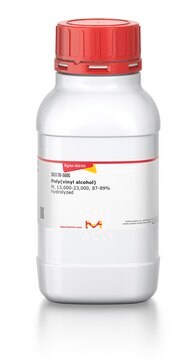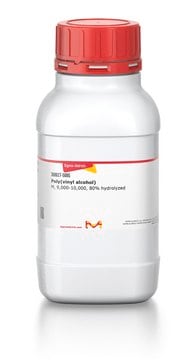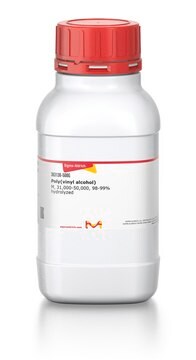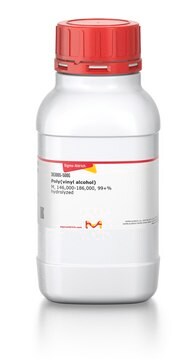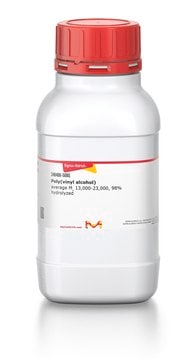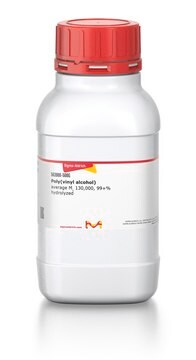P8136
Poly(vinyl alcohol)
87-90% hydrolyzed, average mol wt 30,000-70,000
Synonim(y):
PVA, PVAl, PVOH, Poly(Ethenol)
About This Item
Polecane produkty
Poziom jakości
Postać
powder
masa cząsteczkowa
average mol wt 30,000-70,000
lepkość
4-6 cP, 4 % in H2O(20 °C)(lit.)
rozpuszczalność
H2O: soluble
InChI
1S/C2H4O/c1-2-3/h2-3H,1H2
Klucz InChI
IMROMDMJAWUWLK-UHFFFAOYSA-N
Szukasz podobnych produktów? Odwiedź Przewodnik dotyczący porównywania produktów
Powiązane kategorie
Zastosowanie
- in in vitro production (IVP) of bovine embryos
- oocyte recovery and in vitro maturation
- as a macromolecular component in basal cultured medium
Działania biochem./fizjol.
Kod klasy składowania
11 - Combustible Solids
Klasa zagrożenia wodnego (WGK)
WGK 1
Środki ochrony indywidualnej
Eyeshields, Gloves, type N95 (US)
Choose from one of the most recent versions:
Certyfikaty analizy (CoA)
Don't see the Right Version?
If you require a particular version, you can look up a specific certificate by the Lot or Batch number.
Masz już ten produkt?
Dokumenty związane z niedawno zakupionymi produktami zostały zamieszczone w Bibliotece dokumentów.
Klienci oglądali również te produkty
Nasz zespół naukowców ma doświadczenie we wszystkich obszarach badań, w tym w naukach przyrodniczych, materiałoznawstwie, syntezie chemicznej, chromatografii, analityce i wielu innych dziedzinach.
Skontaktuj się z zespołem ds. pomocy technicznej
